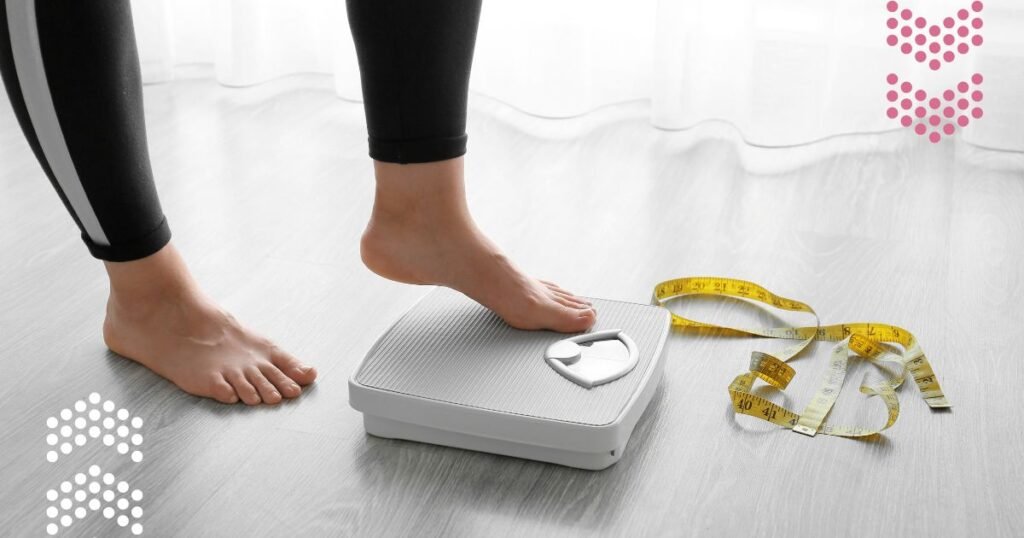What Is Basal Metabolic Rate (BMR)?
Basal Metabolic Rate (BMR) is the number of calories your body needs to perform its basic life-sustaining functions, such as breathing, circulating blood, and maintaining organ function, while at complete rest. Understanding BMR is crucial because it makes up the largest portion of your total daily energy expenditure (TDEE), which influences your ability to lose or maintain weight.
BMR varies from person to person, and this variation is primarily determined by factors such as age, gender, weight, height, and body composition. In particular, men and women have noticeable differences in their BMR due to physiological factors. Women generally have a lower BMR compared to men, which can affect the success of weight loss efforts if not taken into account.
Role of BMR in Weight Loss
When it comes to weight loss, BMR is a critical factor because it dictates how many calories your body burns at rest. If your goal is to lose weight, it is essential to consume fewer calories than your body needs to maintain its current weight. However, since men typically have a higher BMR than women, they often burn more calories even without physical activity, making weight loss easier for men in general.
Factors Influencing BMR
BMR is influenced by several factors, including your age, weight, height, muscle mass, and gender. The amount of muscle mass is particularly important because muscle tissue burns more calories than fat tissue, even when at rest. This is one reason why men, who tend to have more muscle mass, usually have a higher BMR than women.
Physiological Differences Between Men and Women That Affect BMR
Muscle Mass
Muscle mass is a key determinant of BMR. Men generally have more muscle mass than women, largely due to higher levels of testosterone, a hormone that promotes muscle growth. Since muscle burns more calories than fat, men often have a naturally higher BMR. Women, on the other hand, typically have a higher percentage of body fat, which leads to a lower BMR.
Building muscle through resistance training can help increase BMR in both men and women, but it is especially important for women who have a naturally lower BMR. Strength training can be an effective strategy for women looking to increase their BMR and burn more calories throughout the day.
Body Fat Distribution
Women tend to store more fat than men, particularly in areas like the hips, thighs, and buttocks. While fat is essential for normal bodily functions, it doesn’t burn as many calories as muscle. This difference in body fat distribution is another reason why women tend to have a lower BMR than men. Men generally carry more lean muscle mass, particularly in the upper body, which helps to boost their metabolism.
Hormonal Differences
Hormones play a crucial role in regulating metabolism. Testosterone, which is more prevalent in men, helps to build muscle and burn fat, both of which increase BMR. In women, estrogen promotes fat storage, particularly during certain stages of life like pregnancy and menopause. This hormonal difference makes it more difficult for women to maintain a high BMR as they age, compared to men.
In addition to testosterone and estrogen, thyroid hormones also regulate metabolism. An underactive thyroid (hypothyroidism) can slow down BMR and make it harder to lose weight, which is more common in women than men. This can further widen the gap in metabolic rates between men and women.
Resting Energy Expenditure
Resting energy expenditure (REE) is the number of calories burned by the body at rest. Men typically have a higher REE than women due to greater muscle mass and lower fat stores. Since muscle tissue requires more energy to maintain than fat, men burn more calories at rest, leading to a higher overall BMR.
For women, the lower REE means they need to be more mindful of their calorie intake and physical activity levels in order to achieve the same weight loss results as men. While men can often lose weight with minimal lifestyle changes, women may need to focus on increasing physical activity and making more substantial dietary adjustments.
How BMR Changes With Age in Men and Women
Impact of Aging on BMR
As we age, our BMR naturally declines. This is due to a combination of factors, including loss of muscle mass and changes in hormone levels. Both men and women experience a decline in BMR with age, but the rate of decline differs between the sexes.
For men, the decrease in BMR is often gradual, thanks in part to their higher muscle mass. However, women experience a more rapid decline in BMR, particularly after menopause when estrogen levels drop. This hormonal shift can lead to an increase in body fat and a decrease in muscle mass, further lowering BMR.
Menopause and BMR in Women
Menopause marks a significant change in a woman’s hormonal profile, with a sharp decline in estrogen production. This drop in estrogen contributes to a decrease in muscle mass and an increase in fat storage, particularly around the abdomen. As a result, BMR decreases, making it more difficult for women to maintain their weight or lose fat post-menopause.
Post-menopausal women often find that their previous weight loss strategies are no longer as effective. Incorporating strength training, along with a balanced diet rich in protein, can help combat the decline in BMR and promote a healthy metabolism during and after menopause.
Muscle Mass Decline in Men
Men also experience a decline in muscle mass as they age, which leads to a reduction in BMR. However, because men typically have more muscle to begin with, the effects of muscle loss are not as pronounced in terms of metabolic decline. Men can often mitigate the effects of aging on BMR by continuing to engage in physical activity, particularly strength training.
How Weight Loss Affects BMR Differently in Men and Women
Caloric Deficit and Muscle Mass
When individuals follow a calorie deficit diet for weight loss, men often see faster results than women. This is due to men’s higher muscle mass, which allows them to burn more calories even at rest. Women, who generally have lower muscle mass, may need to exercise more frequently or reduce calorie intake more drastically to achieve the same level of weight loss as men.
Adaptive Thermogenesis
Women are more likely to experience adaptive thermogenesis during periods of calorie restriction. Adaptive thermogenesis is the body’s natural response to a reduced caloric intake, slowing down metabolism to conserve energy. This mechanism makes it harder for women to lose weight, even when following a strict diet and exercise routine.
Yo-Yo Dieting
Many women fall into the trap of yo-yo dieting, where weight loss is quickly followed by weight gain. This cycle can lead to a decrease in BMR, making it more difficult to lose weight in the future. The more frequently an individual engages in yo-yo dieting, the more likely they are to experience a long-term decrease in metabolism.
Calculating BMR for Men vs. Women
Different Formulas for Men and Women
There are various formulas used to calculate BMR, with some of the most popular being the Mifflin-St Jeor equation and the Harris-Benedict equation. These formulas take into account factors such as age, weight, height, and gender to provide an estimate of an individual’s BMR.
For example, the Mifflin-St Jeor equation calculates BMR as follows:
For men:
BMR = (10 x weight in kg) + (6.25 x height in cm) – (5 x age in years) + 5
For women:
BMR = (10 x weight in kg) + (6.25 x height in cm) – (5 x age in years) – 161
Examples of BMR Calculation
Let’s consider two individuals, a man and a woman, both aged 35, weighing 70kg (154 pounds), and standing 170cm (5’7”) tall. Using the Mifflin-St Jeor equation, the man’s BMR would be calculated as 1,686 calories per day, while the woman’s BMR would be approximately 1,410 calories per day. This significant difference highlights how gender impacts BMR.
BMR and Fitness Goals for Women
Why Understanding BMR Matters for Women
Understanding your BMR is crucial for developing an effective weight loss plan. Women, in particular, need to take their lower BMR into account when designing a fitness and nutrition strategy. Since women burn fewer calories at rest than men, they may need to adjust their caloric intake and exercise routine to achieve their weight loss goals.
Strategies to Boost BMR in Women
There are several strategies women can use to boost their BMR and improve weight loss results:
- Strength Training: Building muscle mass through resistance exercises increases BMR.
- Protein-Rich Diet: Protein helps to preserve muscle mass during weight loss and can boost metabolism.
- Frequent Meals: Eating smaller, more frequent meals can help maintain energy levels and prevent metabolic slowdowns.
Long-Term Weight Management
For women, maintaining a healthy BMR is essential for long-term weight management. By focusing on building muscle mass, eating a balanced diet, and managing hormones, women can keep their metabolism active and avoid the pitfalls of adaptive thermogenesis and yo-yo dieting.
The Importance of Personalization in Weight Loss Programs
Why Women-Only Programs Like ShapioX Are Effective
Women’s bodies are different from men’s in many ways, and these differences must be considered when creating a weight loss plan. Programs like ShapioX are designed specifically to address the unique needs of women, helping them to optimize their metabolism, achieve their fitness goals, and maintain a healthy weight.
ShapioX Tools for BMR Management
ShapioX offers a variety of tools and resources to help women manage their BMR and achieve long-term weight loss success. These include BMR calculators, workout plans, nutrition guides, and community support to help women of all ages reach their health and fitness goals.
Conclusion
Understanding how BMR differs between men and women is essential for developing an effective weight loss plan. Women face unique challenges when it comes to metabolism, including lower muscle mass, hormonal fluctuations, and the impact of aging on BMR. By tailoring their weight loss strategies to their individual needs, women can boost their BMR, improve their health, and achieve lasting weight loss results.
To learn more about how personalized weight loss solutions can help you reach your goals, be sure to explore our website for expert advice, resources, and fitness programs designed specifically for women at every stage of their fitness journey.


